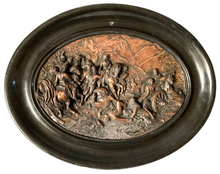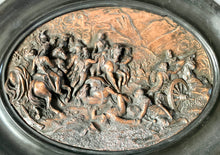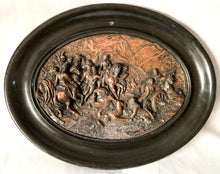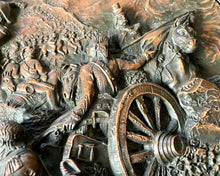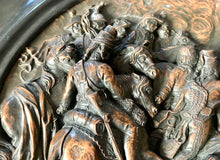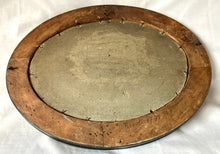
Large 19th Century Copper Relief Plaque Depicting Napoleon at The Battle of Rivoli, 14th - 15th January 1797. The plaque is signed Lavastre 1853, after the painting by Henri Felix Emmanuel Philippoteaux.
This was a key victory in the French campaign in Italy against Austria. Napoleon’s 23,000 French troops defeated an attack of 28,000 Austrians ending Austria’s fourth and final attempt to relieve the Siege of Mantua. Rivoli further demonstrated Napoleon’s brilliance as a military commander and led to French consolidation of northern Italy. The plaque has very fine embossed detail, clearly depicting Napoleon on horseback.
The copper relief panel is housed in an oval ebonised frame.
Approximate dimensions are 50 cm length, 39 cm width and 3 cm depth.
Approximate weight is 2 kilos.
In very good condition with no dents to the relief detail. Some tarnish to the copper. A small hole in the ebonised frame and some old woodworm traces to the rear of the frame.











